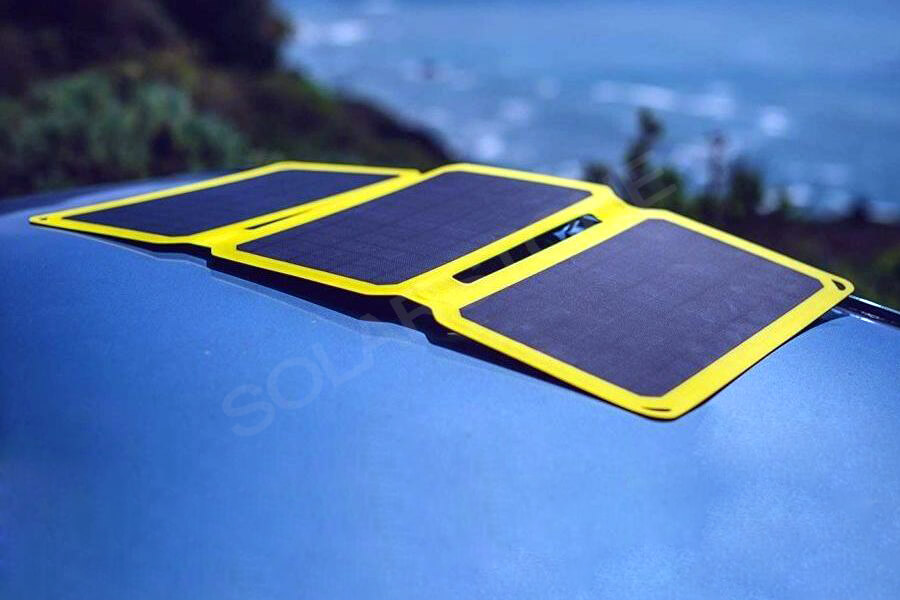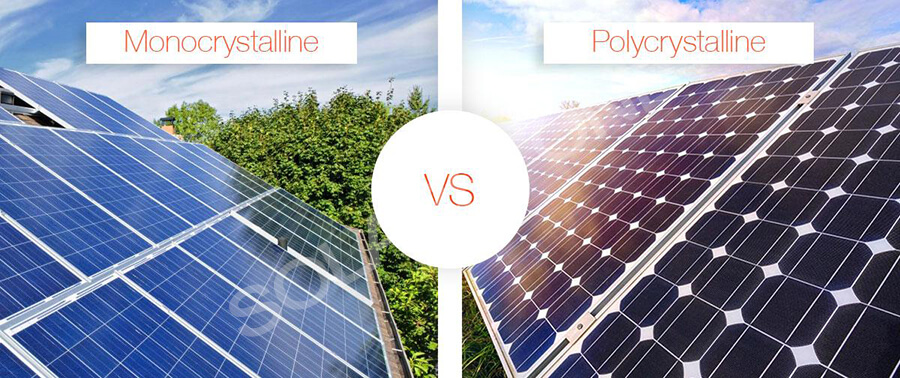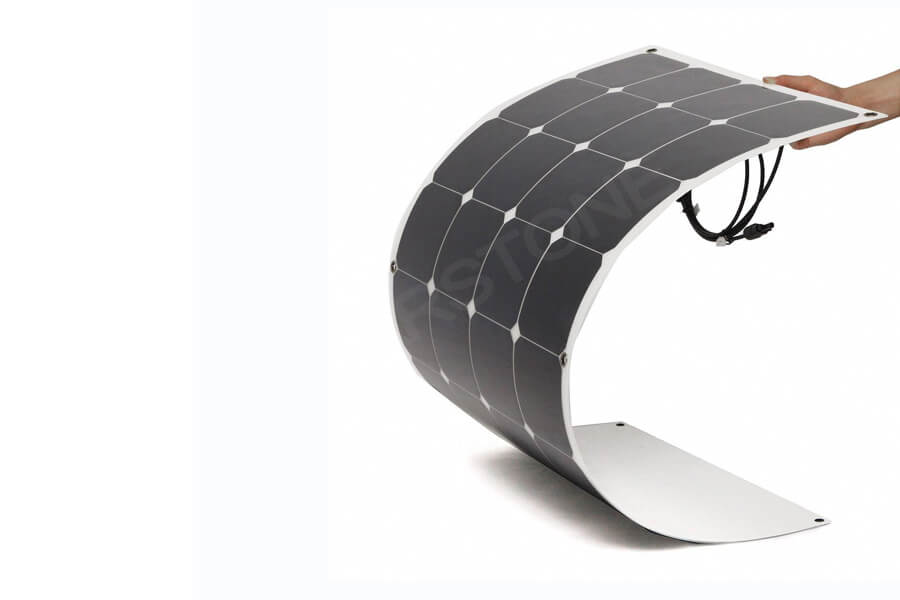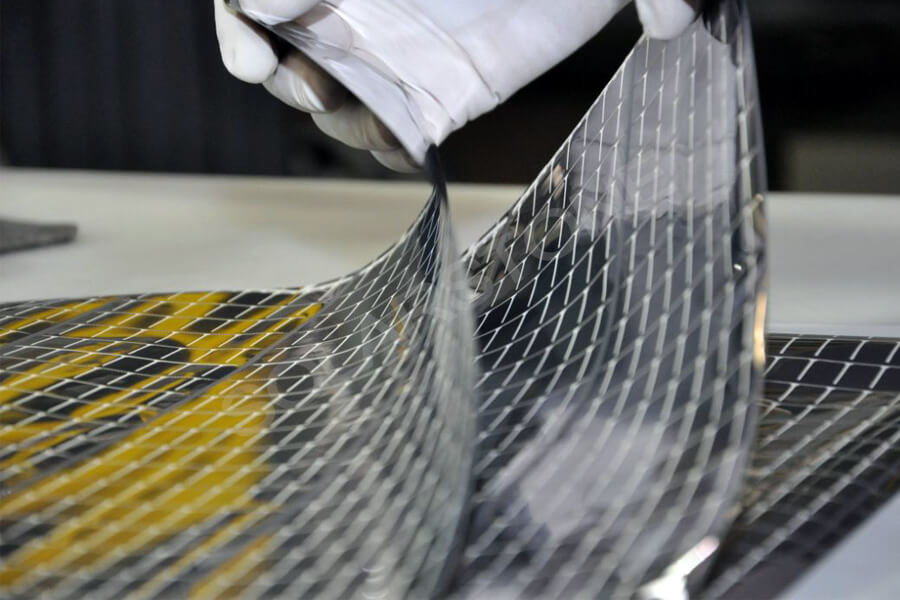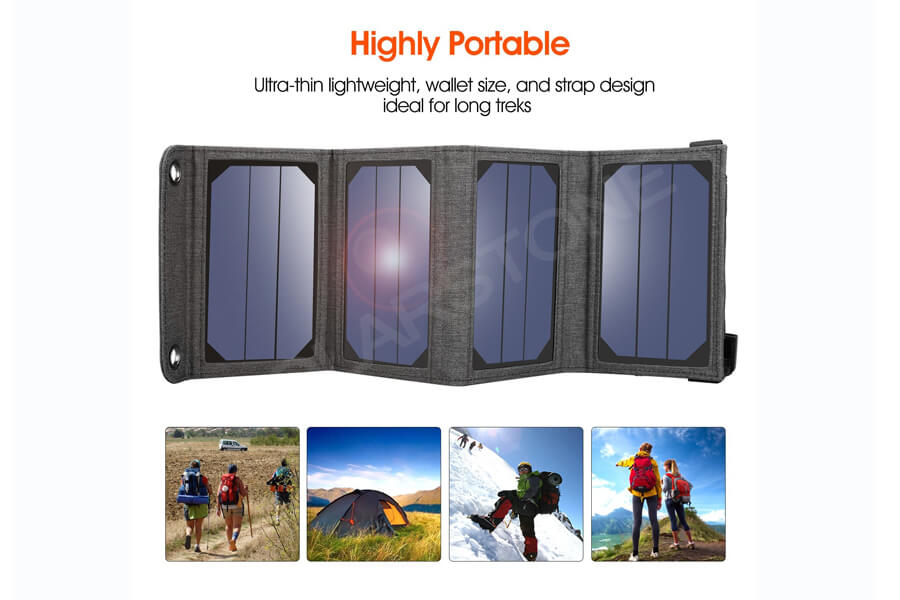With the development of photovoltaic industry and mobile energy application products, outdoor solar charger products are loved by more and more donkey friends, and different solar application electronic products have emerged.
However, many consumers do not know how to choose in the face of a variety of solar charging application products, As a solar charger product, the most important part is solar panels. So, it is very important to know the different types of solar panels. So let me explain the type of solar panel for you.
After years of development, solar charging technology has also undergone great changes. From the original polysilicon solar panel, single silicon solar panel, semi flexible solar panel to thin film solar panel, the technology of solar panel is becoming more and more mature and more suitable for people’s life, at the same time, the efficiency and efficiency of charging have also been greatly improved. From the initial conversion rate of only 8% to the current conversion rate of 24.2%, solar charging is more popular.
Polycrystalline silicon solar panels are solar panels with different power arranged by polycrystalline silicon solar cells in different arrays to meet the power needs of different electrical appliances. The production technology of polysilicon silicon solar panel is not very different from that of monocrystalline silicon solar panel, but the photoelectric conversion efficiency of polysilicon solar panel is much lower than that of monocrystalline solar panel.
Monocrystalline silicon solar panels have the highest photoelectric conversion efficiency among all kinds of solar panels. Monocrystalline silicon is generally encapsulated with tempered glass and waterproof resin.
Semi flexible solar panel can be bent by about 45 degrees, and it is also a solar cell plate with high conversion efficiency at present. The conversion efficiency is up to 24.2%. Compared with poly and mono solar panels, it is lighter, thinner and softer.
Flexible thin film solar panel. With the development of digital products for solar energy applications, flexible thin film solar panels are widely used in solar folding bags, solar backpacks, solar charging paper, solar tiles, etc. due to its advantages of small weight, thin thickness, bending and simple manufacturing technology. Although the advantages of thin film solar panels are outstanding, the photoelectric conversion efficiency of thin film solar panels is not as high as that of traditional crystal silicon cells. The improvement of conversion efficiency of thin film solar cells is the main direction of the solar science and technology.
Through the above interpretation, each type of solar panel has its own advantages and disadvantages. However, from the application of terminal, semi flexible solar panels are more suitable for solar folding package, while thin film solar panels are quite perfect for their use in solar backpacks because they can be bent from a large angle, I also believe that through in-depth understanding, donkey friends will better choose their favorite solar charging digital products.



